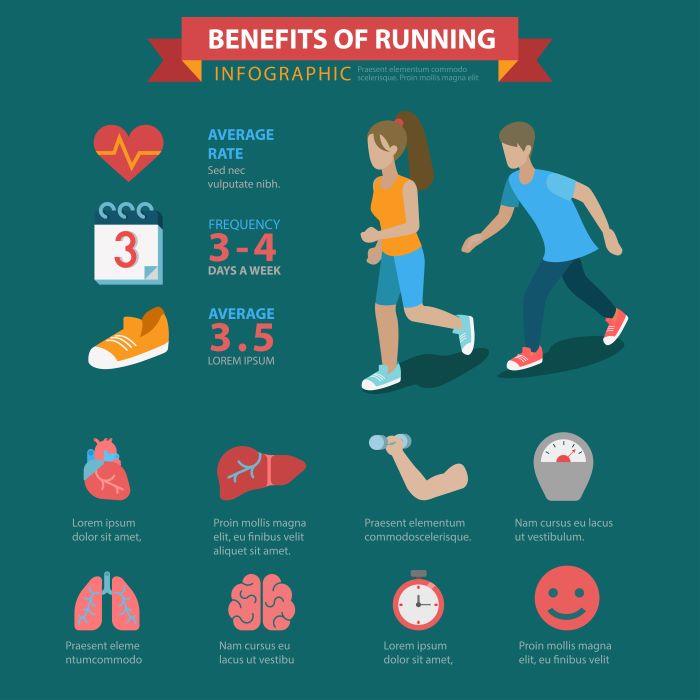Running is not just about putting one foot in front of the other; it’s a complex activity that can be optimized through targeted training. To truly enhance your performance, it’s essential to incorporate the best running drills for fitness into your routine. Whether you’re a beginner or a seasoned athlete, these drills can help you build strength, improve your speed, and increase your overall endurance.
So, what exactly are running drills? They are structured exercises designed to improve specific aspects of your running, such as:
- Form and Technique: Focus on your posture, foot strike, and overall running efficiency.
- Speed Work: Engage in activities that boost your speed and quickness.
- Strength Building: Incorporate exercises that enhance your muscle power and endurance.
Integrating these drills into your weekly training routine can lead to noticeable improvements in your performance, making your runs not only more effective but also more enjoyable. By participating in a vibrant running community, you can exchange tips, share experiences, and stay motivated throughout your fitness journey.
Visit our website to learn more and get started today! Click here.
Benefits of Incorporating Running Drills

Incorporating running drills into your fitness regimen offers a multitude of benefits that can enhance not only your performance but also your overall enjoyment of the sport. Understanding these advantages can motivate you to include drills in your routine, allowing you to experience the full spectrum of what running has to offer.
Here are some key benefits of integrating running drills:
- Improved Technique: Running drills help refine your form, promoting better posture and foot placement. This can lead to more efficient running and reduce the risk of injury.
- Enhanced Speed and Agility: Specific drills, such as sprints and high knees, can significantly boost your speed and quickness, making you a more competitive runner.
- Increased Strength: Many drills focus on building core and leg strength, contributing to greater overall power during your runs. Stronger muscles can help you sustain longer distances with less fatigue.
- Variety and Fun: Adding drills to your workouts breaks the monotony of regular runs. They introduce variety, making your training sessions more engaging and enjoyable.
- Better Mental Focus: Running drills require concentration and focus, enhancing your mental toughness and preparing you for race-day conditions.
By recognizing these benefits, you can appreciate how running drills can transform your approach to fitness and running. They not only pave the way for physical improvements but also enrich your experience in the running community.
Top Running Drills to Boost Performance

To elevate your running game and achieve your fitness goals, incorporating specific drills tailored for performance enhancement is crucial. These exercises are designed to improve various aspects of your running ability, such as speed, endurance, and overall technique. Here are some of the top running drills that can help you boost your performance:
- High Knees: This drill focuses on increasing your leg lift and cadence. As you run in place, lift your knees towards your chest while maintaining a quick pace. This exercise improves your running form and strengthens your hip flexors.
- Butt Kicks: Running while bringing your heels up towards your glutes, butt kicks enhance your hamstring flexibility and strength. This drill also aids in improving your overall stride and helps in preventing injuries.
- Strides: Gradually increase your speed over a distance of 100 meters, then slow down. Strides allow you to practice running at a faster pace without the pressure of a full sprint, helping you develop speed and efficiency.
- Bounding: This drill mimics a running motion but exaggerates the stride length and height, focusing on power and explosiveness. Bounding helps develop strength in your legs and improves coordination.
- Fartlek Training: This type of interval training combines fast and slow running over varied distances. It enhances your aerobic capacity and helps you learn to manage your speed during races.
Integrating these drills into your weekly training routine can lead to significant improvements in your running performance. Not only will you build strength and speed, but you’ll also foster a greater connection with your body as you explore the art of running.
How to Structure Your Running Drill Workouts

Creating a well-structured running drill workout is essential for maximizing effectiveness and minimizing the risk of injury. A thoughtful approach not only enhances your performance but also keeps your routine engaging and enjoyable. Here’s how to structure your running drill workouts:
- Warm-Up: Always begin with a proper warm-up to prepare your muscles and joints for the workout ahead. Spend at least 10 minutes with dynamic stretches or light jogging to increase your heart rate and improve blood flow.
- Drill Selection: Choose a variety of drills that target different aspects of running. Aim for a mix of speed, agility, and strength drills. For instance, you might include high knees, butt kicks, and strides in one session.
- Set Repetitions: Determine how many repetitions of each drill you will perform. Generally, 3-5 sets of each drill, lasting 20-30 seconds, is effective. Allow for short rest intervals of 30 seconds to 1 minute between sets to recover.
- Cool Down: After completing your drills, take time to cool down with a slow jog or walk for 5-10 minutes. This helps your body transition back to a resting state and reduces muscle soreness.
- Stretching: Conclude your workout with static stretches focusing on the major muscle groups used in running, such as your hamstrings, quadriceps, and calves. This aids in flexibility and recovery.
By following these guidelines, you can create effective running drill workouts that will not only improve your performance but also keep your training routine fresh and exciting. Tailor each session to your specific goals and enjoy the journey of becoming a stronger, faster runner.
Common Mistakes to Avoid with Running Drills

When it comes to incorporating running drills into your training regimen, avoiding common pitfalls can be the key to achieving your fitness goals. Here are several mistakes runners frequently make and tips on how to steer clear of them:
- Skipping the Warm-Up: Failing to properly warm up can lead to injuries. Always start with at least 10 minutes of dynamic stretching or light jogging to prepare your muscles for the workout.
- Neglecting Form: Poor form during drills can lead to inefficiency and injuries. Focus on maintaining proper posture and mechanics throughout each drill. Consider getting feedback from a coach or using video analysis to improve your technique.
- Overtraining: Doing too many drills without adequate recovery can lead to burnout and injuries. Ensure you incorporate rest days into your schedule and listen to your body’s signals.
- Inconsistent Routine: Infrequent practice of drills can hinder progress. Aim for consistency by integrating running drills into your weekly routine, allowing for gradual improvement over time.
- Ignoring Strength Training: Running drills should complement a well-rounded fitness program that includes strength training. Neglecting strength work can result in imbalances and increase the risk of injury.
- Not Setting Goals: Training without a clear purpose can lead to stagnation. Set specific, measurable goals for your running drills to keep yourself motivated and track your progress.
By being aware of these common mistakes and taking proactive steps to avoid them, you can enhance your running drill experience and accelerate your journey towards ultimate fitness.
Join Our Community for Running Support
One of the most rewarding aspects of pursuing running as a fitness journey is the sense of community that comes with it. Joining a supportive network can provide you with encouragement, motivation, and valuable insights to help you achieve your running goals. Here’s why becoming part of a running community is essential:
- Shared Experiences: Engaging with fellow runners allows you to share your experiences, challenges, and triumphs. This camaraderie can bolster your resolve and help you stay committed to your training.
- Accountability: Being part of a community creates a sense of accountability. When you have others counting on you, it’s easier to stick to your training schedule and push through tough days.
- Access to Resources: Many running communities offer access to valuable resources, including training plans, workshops, and expert advice. You can learn about the best running drills for fitness and receive tailored guidance to enhance your performance.
- Social Connections: Running is often more enjoyable when shared with others. Connecting with like-minded individuals can lead to lasting friendships and social events that make your running journey more fulfilling.
- Event Participation: Many communities organize group runs, races, and social events that provide opportunities to engage beyond the training. Participating in these events can deepen your commitment and make running a more enjoyable experience.
Embrace the joy of running and discover the power of community. Visit our website to learn more and get started today! Click here.


